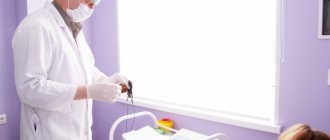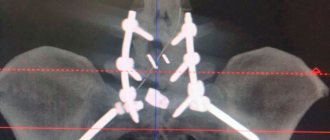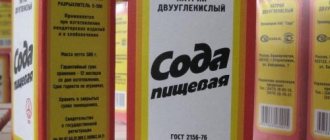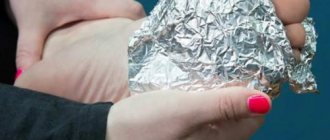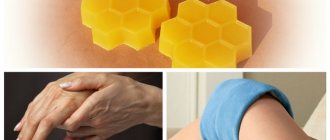With the advent of low-energy shock wave therapy devices from Storz Medical, the list of indications for shock wave therapy has increased. Radial shock wave therapy devices have made it possible to expand the indications for shock wave therapy in neurology, aesthetic medicine, orthopedics, and rehabilitation. Modern Storz Medical UVT devices allow us to develop our own successful methods for treating diseases of the musculoskeletal system. Summarizing our own experience of using shock wave therapy, as well as the experience of advanced doctors and scientists from other countries who have used Storz Medical equipment, we can formulate a list of the main indications for the use of shock wave therapy.
Indications for shock wave therapy in traumatology and orthopedics.
- Heel spur (plantar fasciitis with and without heel spur) .
- Lateral and medial epicondylitis (“tennis elbow”, “golfer’s elbow”)
- Rotator cuff tendinitis and shoulder bursitis, impingement syndrome
- Achilles tendonitis.
- Calcific tendinitis of the shoulder.
- Patellar tendinitis (“jumper’s knee”).
- Bursitis of the trochanter of the hip joint, patella and olecranon.
- Delayed consolidation of fractures, pseudarthrosis (nonunion of the bone).
- Metatarsalgia.
- Acute and chronic dorsalgia.
- Repeated muscle stretching.
- Calcific tendinitis.
- Tibial stress syndrome (“shin splints”).
- Chronic enthesopathies.
- Osteochondritis dissecans.
- Aseptic necrosis of bone.
- Chondropathy of the patella.
- Anterior tibial stress syndrome.
- Injuries to muscles and tendons.
- Sports injuries, including in the subacute period.
- Rigid 1st toe, hallux valgus.
- Achillodynia.
- Long-term non-union fractures and pseudarthrosis.
- Arthrosis stages 1-2, pain syndromes with arthrosis stages 3-4.
- Post-immobilization joint contractures.
- ARS syndrome.
- Schlatter's disease.
Content
- Indications
- Orthopedics
- Diseases of the cervical spine
- Diseases of the thoracic spine
- Diseases of the lumbar spine
- Shoulder joint diseases
- Elbow diseases
- Diseases of the wrist joint
- Diseases of the hand and fingers
- Hip diseases
- Knee diseases
- Ankle diseases
- Foot diseases
- Traumatology
- Diseases of the genitourinary system (Urology)
- Heart diseases
- Cosmetology
- Vascular diseases
- Dentistry
- Surgery
- Contraindications
- Relative contraindications
- Absolute contraindications
- Technical contraindications
- Possible side effects
- Commentary from an expert doctor
- Prices for UVT
- Our doctors
- Why do they contact us?
- Patient reviews
- Sign up for treatment
Indications for shock wave therapy in neurology.
- Acute/chronic cervical and lumbar pseudoradicular syndrome.
- Humeroscapular periarthrosis.
- Myofascial trigger points (muscle pain points).
- Cervicalgia, cervicobrachialgia.
- Lumbodynia.
- Piriformis syndrome.
- Dupuytren's contracture.
- Spasticity and contractures in cerebral palsy.
- Muscle tension headache.
- Cervical migraine.
- Vertebrogenic cervicalgia.
- Spastic equine foot with cerebral palsy.
- Post-stroke hypertonicity of the extremities.
- Post-stroke shoulder pain.
What exactly happens in our tissues during the procedure?
- Increased blood flow and local hyperemia at the site of exposure enhances the breakdown of inflammatory mediators and induces regenerative processes.
- Stimulation of metabolic reactions during the passage of a shock wave is caused by a change in the membrane permeability of cells.
- High and medium pressure pulses lead to changes in the polarity and direction of ion channels and contribute to a short-term expansion of intermolecular distances.
- Shock wave treatment stimulates the excretion of catabolic products, activates the function of macrophages, which achieves an anti-inflammatory effect.
Indications for shock wave therapy in dermatology and aesthetic medicine.
Chronic skin wounds Scar smoothing, keloid scars Burns (II and III degrees) Skin tightening Cellulite (all stages) Lipodystrophy Edematous fibrosclerosis Connective tissue weakness syndrome Stretch marks after pregnancy Chronic venous and arterial ulcers Pressure ulcers Diabetic foot syndrome Treatment of spider veins Psoriatic plaques
We can already say with confidence that today shock wave therapy is the most effective method of treating cellulite. Therapy for age-related wrinkles has been added to this list, without Botox and surgery!
Mechanism of action of UVT
For more than twenty years, extracorporeal shock wave lithotripsy has been successfully used in the treatment of urolithiasis. Just as shock wave energy causes the destruction of kidney stones, exposure to damaged tissue accelerates reparative processes, causing revascularization and triggering other regeneration mechanisms.
There are several theories about the mechanism of the analgesic effect of shock wave in the treatment of chronic pain syndromes:
- changes in biochemistry in tissues with an increase in the production of substances that inhibit pain mediators;
- destruction of cell membranes of pain receptor cells that generate pain impulses;
- stimulation of pain receptors, which causes the production of high-frequency impulses. The retrocession of these pain impulses, which is entirely dependent on external stimulation, is thus inhibited (according to the "gate control" theory);
- stimulation of the release of endorphins, which in turn lead to a decrease in sensitivity to pain in tissues.
All these theories currently need confirmation in clinical studies. To date, these theories have not yet been confirmed. Perhaps a symbiosis of pathogenesis mechanisms actually occurs. However, up to 80% of the effectiveness of using a shock wave is noted.
Effects of UVT on fabric:
- Increased metabolism in target tissues
- Destruction of calcium deposits and further resorption (around the inside of the tendons)
- Reducing the activity of inflammatory processes
- Reducing pain
- Increased fabric strength
The ability of cells to regenerate after exposure to a shock sound wave depends on the power of the generated wave and the degree of its absorption by tissues.
When the wave energy is sufficiently high, tissue cell nuclei are destroyed. In osteotherapy, in order to achieve an osteoneogenetic effect, the shock wave must be powerful enough to affect bone structures. In our Center, treatment is carried out using the Swiss DolorClast device, which generates a shock wave using a pneumatic method, propagating in the patient’s body to a depth of 35 mm.
Shock wave therapy
Shock wave therapy is a physiotherapeutic treatment method in which the main effect on the human body is exerted by low frequency waves (infrasound).
Infrasound and its features
Infrasound (wave frequency below 16 Hz) is inaudible to the human ear. It is possible to feel the vibrations of these frequencies if they resonate with the hollow organs of the body: lungs, esophagus, vestibular apparatus, nasopharynx.
In nature, infrasonic waves occur during earthquakes, volcanic eruptions, and hurricanes. These waves are unconsciously perceived by a person as a signal of danger; at high amplitude (“loudness”), a desire to escape arises. Infrasound also occurs in everyday life; its sources can be operating electrical appliances (for example, a washing machine, refrigerator or external unit of a split system), vehicles, and industrial machines. With sufficient intensity or duration of exposure to such waves on the human body, suppression of the nervous system (nervousness) and vestibular apparatus (motion sickness in transport) can occur; similar properties of infrasound are used by the police of European countries to disperse demonstrations. The full impact of infrasound on the human body has not yet been determined.
And yet man has learned to use these dangerous waves. The first step in conquering them was the discovery of the piezoelectric effect (1880), followed by the invention of the piezoelectric element. With the help of this simple device, it becomes possible to perceive and generate waves of any frequency, including infrasound. (More information about piezoelectric elements can be found in Google, search for “piezoelectric effect”). The piezoelectric element is present in seismographs (for sensing vibrations of the earth's crust) and metal detectors. The piezoelectric element in lighters has a similar design. For medical purposes, the piezoelectric element was first used for diagnostic ultrasound installations, but in them it generated and received only ultrasound. Infrasound generation was first used for shock wave therapy devices.
When exposed to the human body, the shock wave increases blood circulation at the site of impact and loosens areas of calcification.
The most common diseases for which shock wave therapy is used
Shock wave therapy has proven its effectiveness in the treatment of diseases of the musculoskeletal system:
- Joint contractures. When exposed to a shock wave, blood flow and tissue nutrition increase, muscles and ligaments become more elastic and do not interfere with movements in the joint
- Degeneration and calcification of articular cartilage. A shock wave with regular exposure can destroy microcrystals of calcium salts and, in combination with other methods, promote the restoration of cartilage tissue in the joint
- Rehabilitation after fractures and injuries. Exposure to a shock wave significantly accelerates the regeneration of damaged tissue, this effect again occurs due to increased blood flow and accelerated metabolism.
- Skin damage, including ulcers and bedsores. Shock wave therapy promotes skin regeneration, but you should approach infected wounds with extreme caution (see contraindications)
- Non-surgical method of treating urolithiasis - crushing kidney stones with a shock wave
- Fat deposits, fibrosis of adipose tissue. Increasing blood flow and mechanical action in the area of fat deposits can help restore the normal structure of fatty tissue, but shock wave therapy, unfortunately, is not suitable as the only measure
- Other diseases
In what cases will shock wave therapy be ineffective?
Shock wave therapy is usually included in the treatment complex for a number of diseases, however, not in all cases it will contribute to recovery, for example:
Intervertebral hernia. The pain that occurs with a herniated intervertebral disc is primarily caused by pinching of the spinal nerve root by a deformed disc protruding beyond its physiological boundaries. Shock wave therapy cannot eliminate this reason.
Sciatica. The discomfort and pain of sciatica is caused by inflammation of the sciatic nerve, and increased blood flow can lead to increased inflammation. A positive effect will not be achieved.
Contraindications and side effects
Despite the fact that experts position shock wave therapy as a safe treatment method, it can only be safe if many conditions are met. Shock wave therapy has a rather strong effect on the body, so there are many contraindications for the use of this treatment method.
- Pregnancy
- Childhood, adolescence, as well as uncovered bone growth zones. For each person, the closure of growth zones occurs individually, on average up to 17-20 years, however, in some cases it can last up to 23-25 years. Impact on bone growth zones can slow or stop bone growth and lead to various deformities
- Presence of a pacemaker. Synchronizing the operating frequency of the pacemaker and the shock wave therapy device is guaranteed to lead to interference in the operation and stopping of the artificial pacemaker
- Impact on the head area. Depending on the intensity and time of exposure, from transient disturbances of the central nervous system to rupture of blood vessels and stroke
- Impact on large vessels, intestines, lungs. A shock wave in the organ cavity can lead to a significant increase in volume, which can lead to ruptures, and in the case of vessels - to thrombosis
- Oncological diseases, especially in the affected area. Shock wave therapy procedures increase blood flow in the affected area; in cancer, this can lead to tumor enlargement or the emergence of new metastases.
- Blood clotting disorder. When exposed to a shock wave on tissue, small blood vessels can be damaged; in case of poor clotting, bleeding and extensive hematomas can occur
- Exposure of the shock wave to nerves and nerve plexuses should be avoided. The impact of a shock wave on a nerve can lead to temporary paresis or loss of sensation in the area of innervation of this nerve
- Presence of infection in the affected area. Increased blood flow in the affected area will lead to the spread of infection through the blood
- Impact on the spine. Despite the possibility of using shock wave therapy in the complex treatment of spondylosis and spondyloarthrosis, many experts consider the use of this method inappropriate, since there is a high probability of damage to the intervertebral discs, spinal nerve roots or the spinal cord itself. In addition, an increase in blood flow in the spine can lead to the growth of the vascular network and the formation of hemangiomas in the vertebral bodies
If all the above precautions are followed, the side effects of shock wave therapy are minor: muscle pain in the area of treatment, fatigue or headache may occur.
Thus, the shock wave therapy method is justified from the point of view of physics and physiology and is effective for a number of diseases. At the same time, one should not expect positive results from the use of shock wave therapy for diseases that this method is not aimed at; it should not be perceived as a cure for all diseases. The use of shock wave for therapeutic purposes is associated with many risks, therefore, a highly qualified specialist must prescribe and carry out shock wave therapy procedures.
Treatment result
patient. Born in 1967.
Complaints of constant severe pain in the area of attachment of the Achilles tendon to the heel tubercle, severe swelling, limited movement in the ankle joint, inability to stand on tiptoes and heels, the patient was limping. Diagnosis: Calcification of the Achilles tendon. Achillodynia with severe pain syndrome.
10 SWT procedures were performed on the BTL device - 6000 SWT (according to the scheme) in combination with kinesio taping (No. 7 in a row, No. 2 after 10 days, and the last procedure after 2 weeks)
The regimen is selected individually for the patient, procedures are performed once a week, the minimum is different for each, and after the minimum has been completed, we move on to performing procedures once every 10 days, then every 12 days, then every 2 weeks. But no more than 10 procedures.
After 10 procedures, a mandatory break of 3-6 months and, if necessary, a repeat course.
The result of treatment is the relief of swelling and pain, restoration of movements in the ankle joint, and the limping has ceased.
Description of the procedure
Therapeutic manipulations are prescribed by the attending physician and must be confirmed by a physiotherapist who studies the patient’s chart and the latest tests. X-rays and MRI studies, extracts with previous diagnoses are carefully examined. The physiotherapist decides how many sessions will be required to achieve a visible effect: usually 5 sessions are usually prescribed with a break of 3-5 days, and then 5 more if necessary.
Shock wave therapy sessions are carried out in the physiotherapy department: the doctor acts on the sore spot, which he has previously treated with medical gel, using the tip of a shock wave apparatus. The procedure usually takes 15–20 minutes. Patients often feel a burning sensation or slight pain, and after the session there may be slight redness, which quickly disappears. With each subsequent visit to the wave therapy room, the discomfort becomes less intense, and patients feel that the pain is receding.
Recently, home treatment of pathologies using a compact device purchased from online stores has become popular. However, such treatment is not always beneficial, since a person without special education cannot control the frequency and depth of exposure. Also, if a person feels unwell, he will need help, which is not always possible to provide in a timely manner.
Operating principle of the UVT device
During a therapeutic session, the patient's body is exposed to acoustic shock waves. Concentrated energy provokes the development of unique extracellular reactions. Even one SWT procedure contributes to:
- increased vascularization;
- active protein biosynthesis;
- cell proliferation;
- destruction of calcium deposits in musculoskeletal structures.
Shock wave therapy promotes the regeneration of tissues, blood vessels and rapid pain relief. Professional athletes and people with disabilities notice an improvement in physical activity.
In everyday life, sound waves pass through the human body without causing any noticeable effect. However, concentrated ultrasound can destroy even hard formations (tartar, calcifications). Low-frequency acoustic waves are used to provoke destruction of subcutaneous structures. Unlike ultrasound, infrasound can be retained in tissues. Modern devices allow you to set the depth of exposure with millimeter precision.
Procedure for performing shock therapy, contraindications and possible side effects
session lasts only 10-15 minutes. The patient will not experience pain. A large amount of conductive gel is applied to the treated area. Depending on your goals, the therapist will set up the device and apply an infrasound wave concentrator to the skin. The intensity of the effect may vary based on the intensity of the patient's pain.
Millions of people have already undergone acoustic shock wave treatment without any significant complications or side effects. Some patients complain of pain during the procedure. Most often, unpleasant sensations occur in patients with radiculitis and calcinosis. The doctor will always select the strength of the shock wave so that the procedure is comfortable for the patient.
Contraindications to shock wave therapy include malignant tumors and chronic diseases in the acute stage. To avoid the development of complications and speed up the recovery of the body, patients must refrain from physical activity for two days after completion of the session.
Shockwave therapy helps relieve health problems without surgery.
Do not delay your visit to the doctor, leave a request online or make an appointment with a doctor at the Diagnostic Center in the city of Shakhty at the address: Karla Marksa, 90, Tel.;
REVIEWS FROM OUR PATIENTS
“ We are sincerely grateful for every review you leave! ”
Add a comment
Alevtina 02/10/2021 17:28:32
I am 52 years old, I have long-standing and serious problems with my spine, and I have been living with a pacemaker for 2 years. Is it possible for me to take a UVT course and how many sessions will I need to do on average?
Show answer
LITVINENKO Andrey Sergeevich 02/12/2021 11:07:25
Good afternoon Alevtina! You need to consult with a cardiologist whether the procedure can be done if you have a pacemaker; sometimes they allow it. It all depends on where and what hurts you. Are there any contraindications to other methods?
Where is UVT used?
| Shoulder joint | Cervical region | Hip joint |
| Elbow joint | Thoracic region | Knee-joint |
| Carpal joint | Lumbar | Ankle and foot |
Modern Swiss equipment (we use the Swish Dolor Clast device from the EMS company) and 20 years of experience of our specialists provide positive results of up to 96% of UVT procedures.

